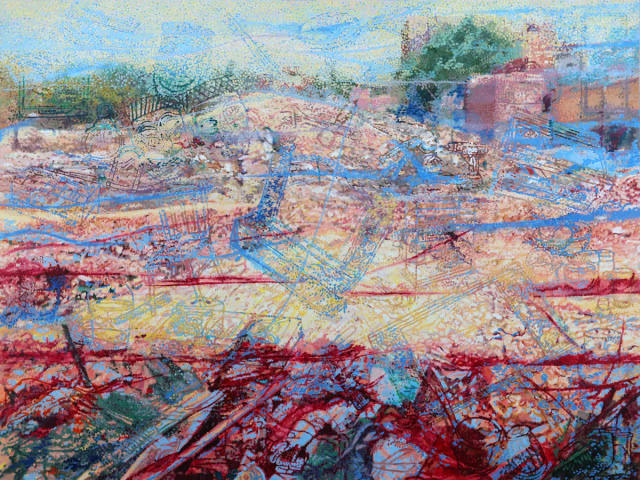A thought-provoking solo show titled “I Rescued Speed Altogether” by artist Paribartana Mohanty is currently on display at Shrine Empire, a gallery in Delhi. The exhibition spans large paintings, moving-image works, and found objects collected over an eight-year period documenting slum demolition and its aftermath.
Central to the work is the story of the Kathputli colony, a settlement in West Delhi known for generations of puppet-makers, performers, artisans, and street artists. Some of these communities were displaced in redevelopment processes that the exhibition investigates.
The artworks often use material remains—stationery, old toys, building fragments, and other domestic objects found in the rubble or left behind—to evoke what was lost, what remains, and how landscapes change with demolition. These items are sometimes physically incorporated into the artworks themselves.
Notably, human figures are largely absent from many pieces; instead, the focus is on space, emptiness, structure, and what objects can reveal about displaced lives. One work includes a life-size metallic outline of a person, symbolising absence and displacement.
Mohanty’s aesthetic mixes impressionist and pointillist techniques, weaving them with archival-style fieldwork and on-site documentation over several years. This long view is meant to “slow down time” and allow viewers to reflect on gradual but profound changes in urban life.
The exhibition also places an emphasis on the notion of what is forgotten: how urban redevelopment can erase not just structures but memories, culture, and livelihoods. The show invites viewers to bear witness rather than simply observe.
Curators and gallery organisers underline the importance of giving voice to marginalised communities, and using exhibition space as a venue for dialogue about urban justice, memory, and the ethics of redevelopment.
For Exhibition Globe’s audience—designers, curators, cultural policy makers—this exhibition stands out as a powerful case of socially engaged art, where exhibition content, form, and context come together to challenge prevailing narratives about progress and inevitability.







